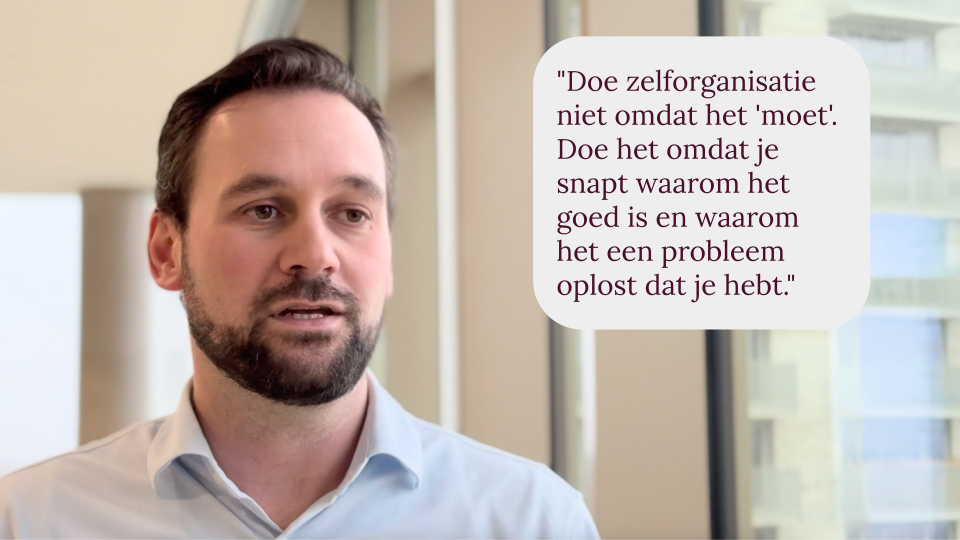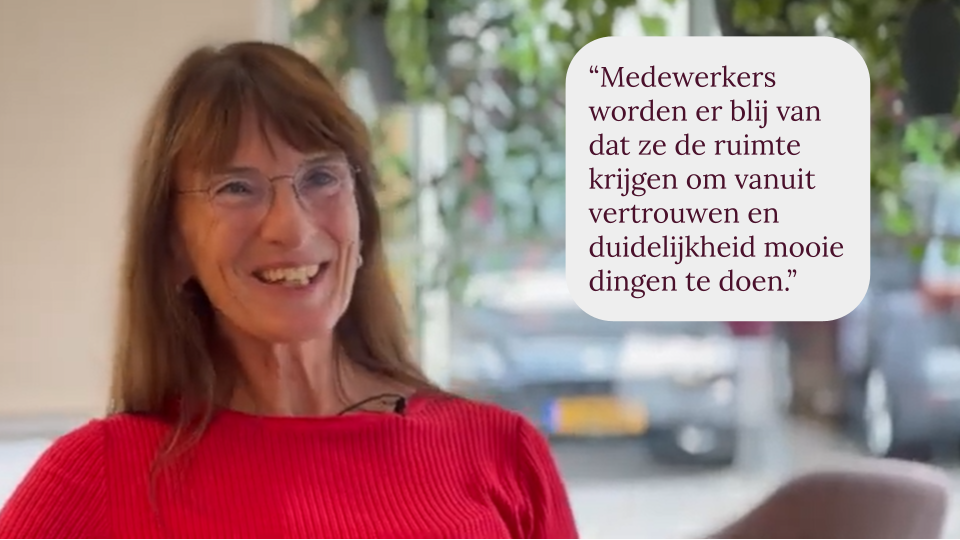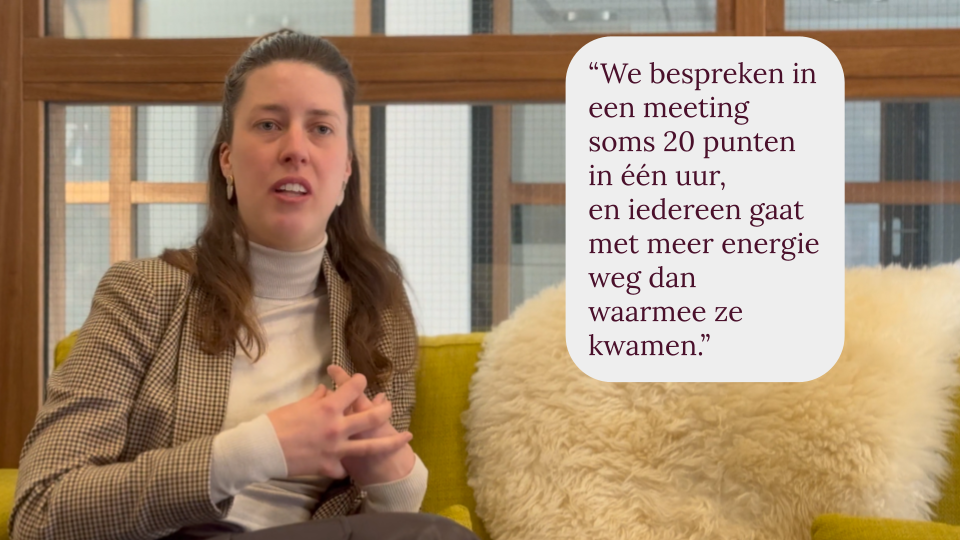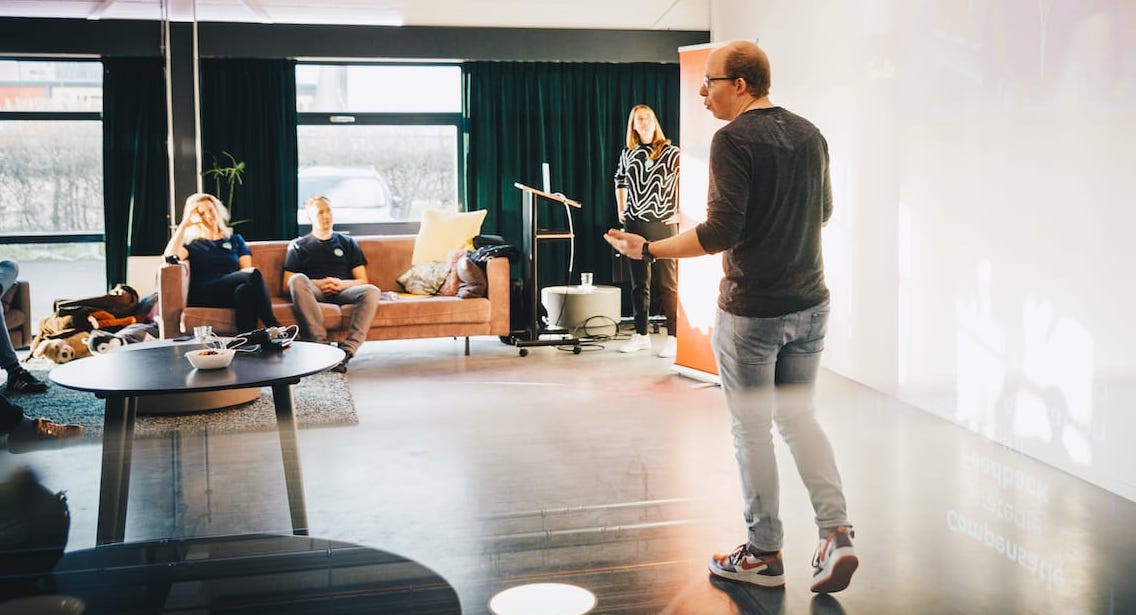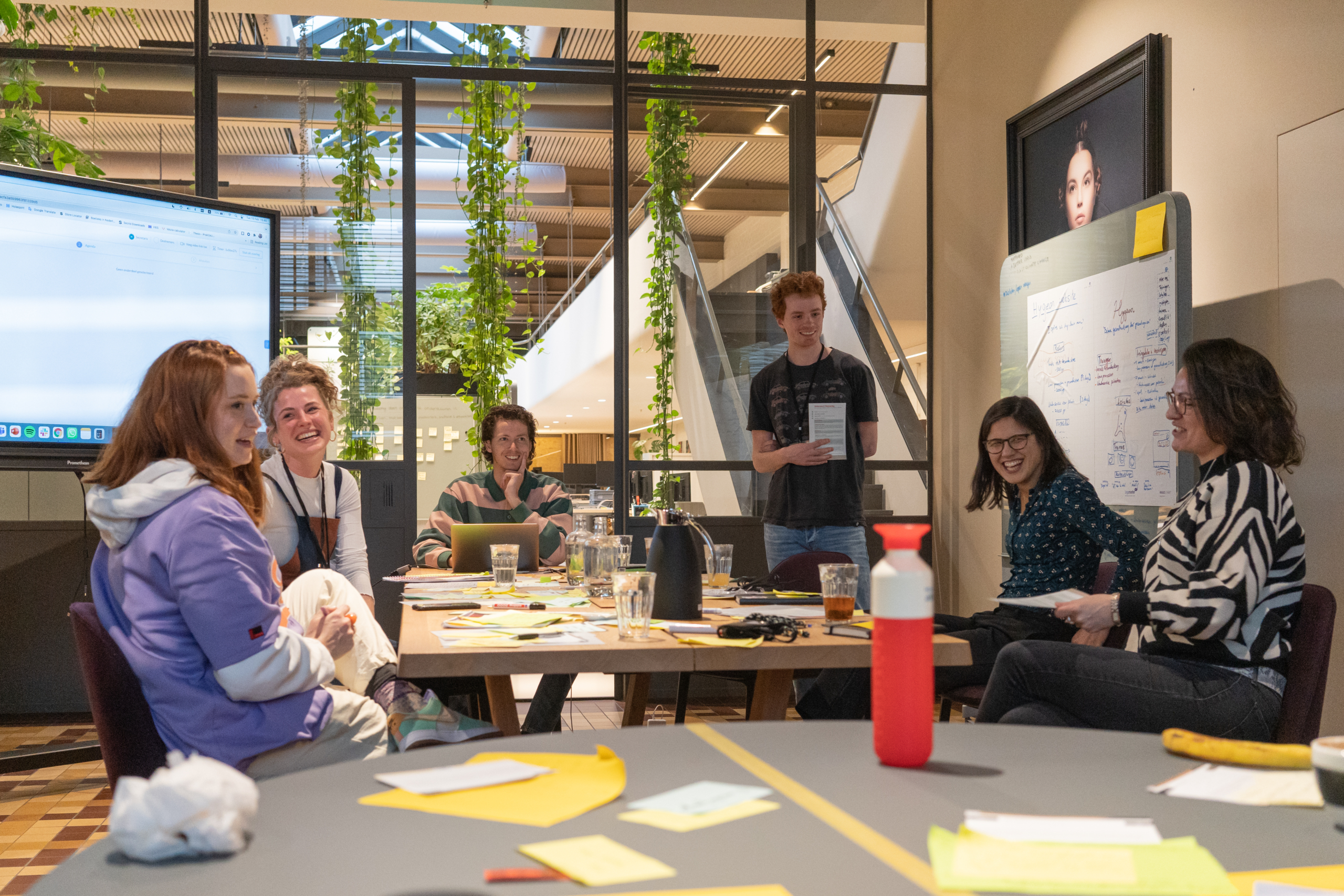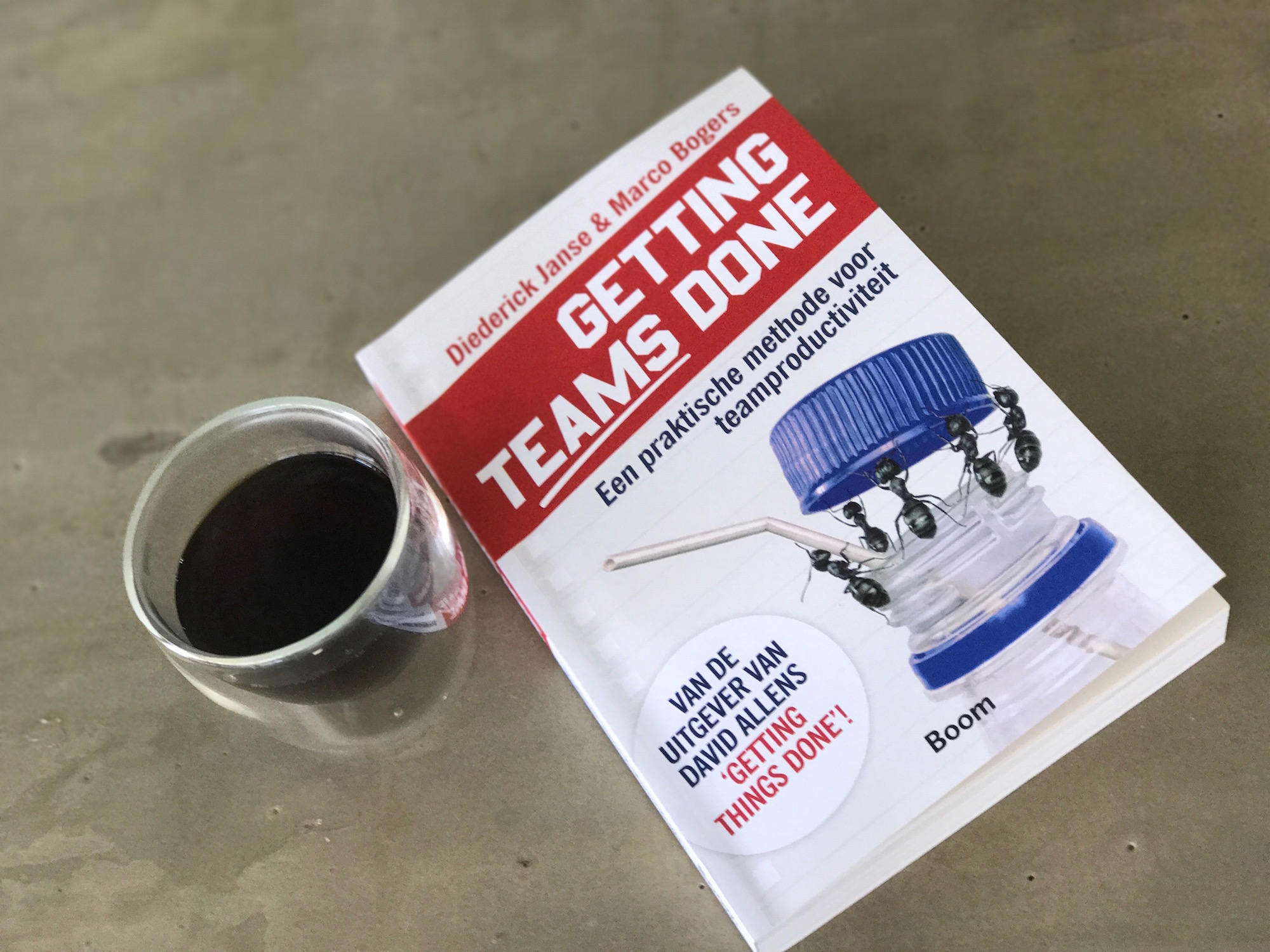Holacracy
Holacracy is een besturingssysteem voor je organisatie. Het is een vorm van zelforganisatie, waarmee sturing en besluitvorming komen te liggen bij de mensen die het werk doen. Holacracy schrijft niet voor hoe je je organisatie inricht, maar geeft je gereedschap om daar met elkaar achter te komen. Zo bouw je aan een wendbare, ondernemende organisatie die de complexe uitdagingen waar je voor staat het hoofd kan bieden.
Wat is Holacracy?
Holacracy is een vorm van zelforganisatie, waarbij medewerkers met elkaar de organisatiestructuur bepalen en deze vervolgens continu doorontwikkelen. De organisatie wordt opgedeeld in cirkels, elk met een gezamenlijke purpose. Deze cirkels beschrijven hun werk in rollen met heldere verantwoordelijkheden. Elke medewerker krijgt één of meer rollen en neemt autonoom beslissingen binnen de kaders van de rol.
Hoe Holacracy werkt
Holacracy is niet zomaar een organisatiemodel; het is een filosofie die de manier waarop we werken verandert. Bij Energized geloven we in het creëren van een dynamische structuur waarin autonomie en een gemeenschappelijke purpose centraal staan. In de praktijk betekent dit een verschuiving van traditionele hiërarchieën naar een gedistribueerd besluitvormingsproces. Rollen en verantwoordelijkheden worden duidelijk gedefinieerd, waardoor iedereen in de organisatie kan floreren. Holacracy biedt een framework voor continue evolutie, waarbij organisaties zich aanpassen aan veranderende omstandigheden en snel kunnen innoveren
De kracht van autonomie
Autonomie is een kernprincipe binnen Holacracy en vormt de ruggengraat van onze werkwijze bij Energized. Door besluitvorming te decentraliseren en verantwoordelijkheden te verdelen, stimuleren we een cultuur van eigenaarschap en empowerment. In een Holacratische organisatie krijgt elk individu de kans om zijn of haar unieke bijdrage te leveren, waardoor innovatie en creativiteit worden aangemoedigd. Bij Energized zien we autonomie niet als een luxe, maar als een noodzakelijke voorwaarde voor succesvolle organisatieontwikkeling.
Wendbaarheid in actie
Een van de meest opvallende kenmerken van Holacracy is de wendbaarheid waarmee organisaties kunnen opereren. Door te focussen op adaptiviteit en flexibiliteit, kunnen organisaties snel reageren op veranderende omstandigheden. Bij Energized zien we deze wendbaarheid als de cruciale factor voor succes. Holacracy biedt een framework waarmee organisaties zich kunnen aanpassen en ontwikkelen in een tempo dat voorheen ondenkbaar was.
De eerste stappen van implementatie
Bij Energized beginnen we met een rollenworkshop, waarin we de basis leggen voor zelforganisatie binnen jouw organisatie. Vervolgens faciliteren we enkele werk- en roloverleggen om de praktijk van Holacracy te ervaren. Na deze initiële stappen dragen we de rol van facilitator en secretaris over aan intern opgeleide medewerkers. Onze begeleiding zorgt voor een vlotte overgang naar zelfstandig gebruik van Holacracy.
Past Holacracy bij mijn organisatie?

Holacracy is bij uitstek geschikt voor organisaties die een sterke groei of verandering doormaken en streven naar meer autonomie en verantwoordelijkheid voor hun medewerkers. Het raamwerk van Holacracy biedt de flexibiliteit en structuur die nodig is om dat in goede banen te leiden. Startups die hun innovatieve cultuur willen behouden naarmate ze groeien, en gevestigde bedrijven die streven naar meer wendbaarheid en responsiviteit, vinden in Holacracy een geschikte oplossing.
Bij Energized begeleiden we specifiek deze organisaties om de overgang naar Holacracy soepel te laten verlopen en de voordelen van zelforganisatie volledig te benutten.
Onze klanten vertellen
In deze video’s vertellen Stijn Nijhuis (Enreach), Elske Heijnen (Travers Welzijn) en Christien van de Pavert, Charelle van der Hoek en Lianne van Lierop (Careibu) over hoe zij met hulp van Energized.org zelforganisatie tot leven brachten in hun organisatie.
Je bent in goed gezelschap
De afgelopen 15 jaar hebben we met meer dan 150 organisaties gebouwd aan een cultuur van eigenaarschap. Dit zijn er een paar die je misschien kent:






Meer eigenaarschap
Medewerkers nemen actief deel aan besluitvorming, waardoor ze zich meer betrokken en verantwoordelijk voelen voor de organisatie.
Wendbaarheid
Holacracy stelt organisaties in staat om snel te reageren op veranderingen in de markt en interne behoeften, waardoor ze wendbaarder worden.
Heldere Structuur
Dankzij de gestandaardiseerde rollen en verantwoordelijkheden ontstaat er duidelijkheid over wie wat doet, waardoor processen efficiënter verlopen.
Gedistribueerd Leiderschap
Holacracy moedigt gedistribueerd leiderschap aan, waarbij leiderschap wordt verspreid over de gehele organisatie in plaats van geconcentreerd te zijn op enkele individuen. Holacracy is bossless maar leaderful.
Verbeterde besluitvorming
Het Holacracy-proces zorgt voor gestructureerde en transparante besluitvorming, waardoor de organisatie sneller en effectiever kan handelen.
Cultuur van continu leren
Holacracy bevordert een cultuur van continu leren en verbeteren, waarbij de organisatie zich voortdurend aanpast en evolueert om succesvol te blijven in een dynamische omgeving.
Populaire blogs
Veelgestelde vragen
We kunnen ons voorstellen dat je vragen hebt over Holacracy. Je kunt altijd contact met ons opnemen, zodat we je zelf meer hierover kunnen vertellen.
Wat is Holacracy eigenlijk en hoe werkt het?
Holacracy is een zelforganisatie-methode die een gestructureerd proces biedt voor besluitvorming en het verdelen van verantwoordelijkheden. In een Holacracy worden traditionele managementhiërarchieën vervangen door gedistribueerde autoriteit en een netwerk van rollen en cirkels. Hierbij wordt de focus gelegd op duidelijke rollen, heldere doelen en het snel verwerken van spanningen. Het proces omvat regelmatige vergaderingen waarin beslissingen worden genomen en rollen worden bijgewerkt.
Welke organisaties gebruiken Holacracy en waarom?
Verschillende organisaties over de hele wereld gebruiken Holacracy, waaronder Enreach (business software), Springest (trainingsplatform), Voys (telecommunicatie), Viisi (hypotheekadvies), PuntP (geestelijke gezondheidszorg), PRO6 managers (consultancy), Snappcar (autodeelplatform), en Secrid (design portemonnees). Deze organisaties kiezen vaak voor Holacracy vanwege de behoefte aan meer autonomie, snellere besluitvorming en een flexibeler organisatiestructuur die beter kan omgaan met veranderingen en groei.
Wat zijn voor- en nadelen van het implementeren van Holacracy?
Voordelen van Holacracy zijn onder meer een toegenomen eigenaarschap en betrokkenheid van medewerkers, een duidelijkere structuur en besluitvormingsproces, en meer wendbaarheid en innovatie. Nadelen kunnen zijn dat het tijd kost om Holacracy te implementeren en dat het niet voor alle organisaties geschikt is, vooral als er weerstand is tegen verandering of als er behoefte is aan sterke centrale leiding.
Hoe verschilt Holacracy van traditionele hiërarchische structuren?
Holacracy verschilt van traditionele hiërarchische structuren door zijn gedistribueerde autoriteit, focus op rollen in plaats van functies, en nadruk op adaptief leiderschap en zelforganisatie. In Holacracy worden beslissingen genomen door degenen die het dichtst bij de actie zijn, en worden machtsstructuren vervangen door transparante regels en processen.
Welke stappen zijn nodig om Holacracy in mijn organisatie te implementeren?
De implementatie van Holacracy omvat verschillende stappen, waaronder het opleiden van medewerkers en leiders over de principes en praktijken van Holacracy, het definiëren van rollen en verantwoordelijkheden, het houden van regelmatige vergaderingen om spanningen te bespreken en beslissingen te nemen, en het geleidelijk aanpassen van de organisatiestructuur en cultuur.
Zijn er casestudy’s van organisaties die Holacracy hebben geïmplementeerd?
Ja, er zijn verschillende succesverhalen en casestudy’s beschikbaar van organisaties die Holacracy hebben geïmplementeerd, zoals Springest (trainingsplatform), Voys (telecommunicatie), Viisi (hypotheekadviseur), PuntP (geestelijke gezondheidszorg), Procesmanagers (consultancy), Snappcar (autodeelplatform), en Secrid (portemonnee-ontwerp). Deze organisaties hebben verbeterde autonomie, betere besluitvorming en een hogere mate van betrokkenheid en tevredenheid van medewerkers ervaren na de implementatie van Holacracy.
Klaar om je verder te verdiepen?
Ontgrendel een heleboel kennis! We hebben talloze blogs, artikelen, handleidingen en zelfs een boek voor jou! Of je nu je eerste stappen zet of de diepte in wil duiken, hier vind je wat je zoekt.
Stuur ons een bericht
Je kunt onderstaand formulier invullen of bel even naar 085-1301795.
